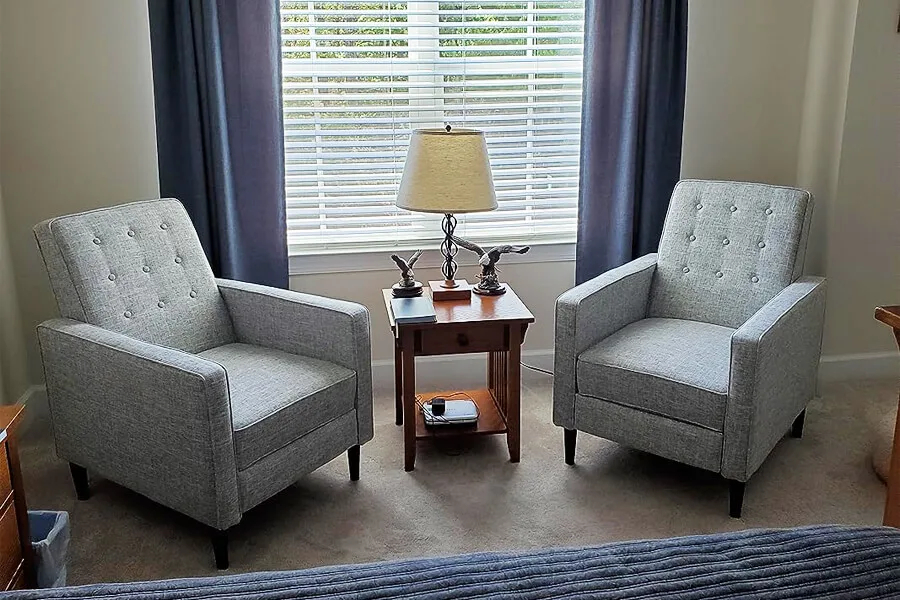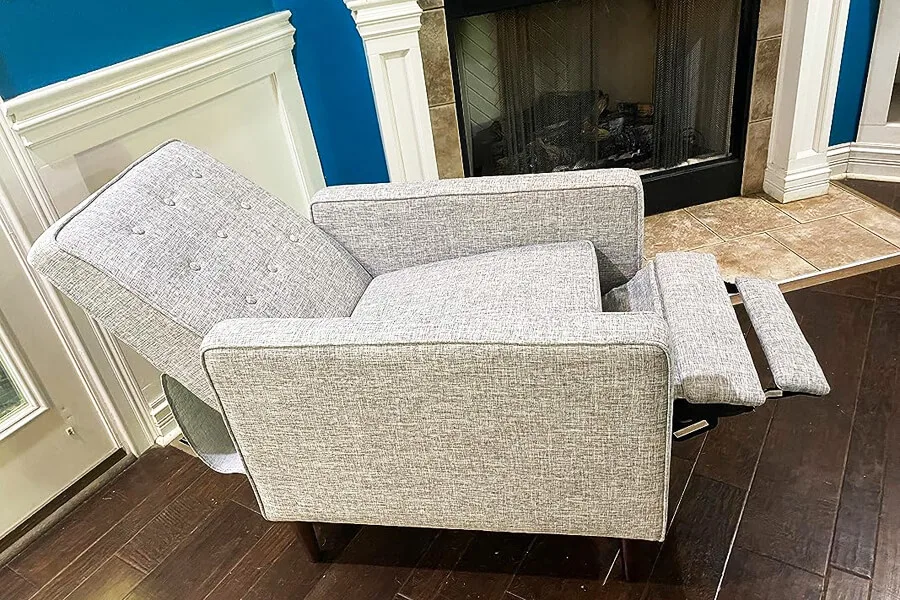Recliners are beloved for their ability to provide relaxation and support. When investing in a recliner, it’s natural to want to know: how long should a recliner last?
On average, a well-made recliner can last anywhere from 8 to 15 years, depending on several factors. High-quality recliners crafted with durable materials and sturdy frames tend to have a longer lifespan. Regular maintenance, such as cushion rotation and cleaning, also plays a crucial role in preserving the recliner’s integrity over time.
In this insightful discussion, we will explore the factors that influence the longevity of a recliner.

How Long Should a Recliner Last?
A recliner is more than just a piece of furniture; it’s a sanctuary of relaxation and tranquility. The average longevity of a recliner is 8-15 years.
Manufacturers are keenly aware of the importance of prolonging the lifespan of their recliners. To achieve this, they employ innovative design techniques and use top-notch materials that can withstand wear and tear.
Reputable brands conduct rigorous testing to ensure their products meet industry standards for longevity and durability.
Moreover, manufacturers often provide care guidelines and recommendations to help customers maintain their recliners in optimal condition.
By following these guidelines and investing in a high-quality recliner, you can be confident in enjoying a comfortable and reliable seating experience for years to come.
However, the actual lifespan of a recliner depends on various factors, including the quality of materials and construction, the frequency and intensity of use, and the level of care and maintenance it receives.
Quality of Materials
When purchasing a recliner, prioritize models made from high-quality materials. Quality components and robust construction play a vital role in the motor’s functionality and overall durability.
Invest in recliners crafted by reputable brands known for their commitment to using premium materials.
Construction and Craftsmanship
Look for recliners with solid construction and meticulous craftsmanship. Well-built recliners are less likely to encounter motor-related problems. Inspect the frame, joints, and mechanical parts before making a purchase.
Frequency of Use
Consider the frequency of recliner use. Recliners intended for daily use should be designed to withstand more wear and tear. If your recliner is heavily used, opting for a model with a durable motor is essential.
Care and Maintenance
Regularly maintain your recliner to keep the motor running smoothly. Follow the manufacturer’s care instructions, which may include lubricating moving parts and tightening screws.
Keeping the recliner clean and well-maintained will prolong its life.
Avoiding Direct Sunlight
Position your recliner away from direct sunlight. Prolonged exposure to sunlight can cause fading and damage to the fabric and motor components.
Fabric
The type of fabric used in a recliner can significantly impact its longevity. Opt for fabrics known for their durability, such as leather or high-quality synthetic materials.
These fabrics are more resistant to wear and tear, ensuring your recliner stays in excellent condition for years to come.

How to Care And Maintain a Recliner
These guidelines are tailored to the specific materials and construction of your recliner, ensuring that you take the best care of your investment.
Regular Cleaning
Keeping your recliner clean is crucial for maintaining its appearance and prolonging its life. Dust and debris can accumulate in crevices and on the upholstery, leading to premature wear.
Regularly vacuum the surface and use a soft, damp cloth to wipe down the recliner, focusing on areas that come into direct contact with your body.
Lubricate Moving Parts
To ensure smooth operation, lubricate the recliner’s moving parts at least once every six months. Follow the manufacturer’s guidelines for the type of lubricant to use and where to apply it.
This will prevent friction and reduce the risk of damage to mechanical components.
Check and Tighten Screws
Over time, the screws holding your recliner together may become loose due to regular use. Periodically inspect and tighten any loose screws to maintain the chair’s stability and prevent potential accidents.
Protect from Sunlight
Direct sunlight can cause fading and damage to the upholstery and other materials. Position your recliner away from windows or use curtains or blinds to shield it from harsh sunlight.
Address Stains and Spills Promptly
Accidents happen, and spills or stains on the recliner are not uncommon. Immediately attend to any spills to prevent them from setting into the fabric or leather.
Use appropriate cleaning agents and techniques recommended for the specific type of upholstery.
Avoid Overloading
Refrain from placing heavy objects on the recliner or overloading its weight capacity. Excessive weight can strain the frame and compromise the chair’s structural integrity.
Rotate Cushions
If your recliner has removable cushions, periodically rotate them to distribute wear evenly. This simple step can extend the life of the cushions and maintain the recliner’s comfort level.
Follow Manufacturer’s Instructions
Always adhere to the care and maintenance instructions provided by the manufacturer.
How Often Will You Use Your Sofa Recliner?
When considering purchasing a sofa recliner, one crucial aspect to ponder is how often you will use it. Your lifestyle and daily routines play a significant role in determining the frequency of recliner use.
If you lead a busy and active lifestyle, your recliner might see limited use during weekdays while becoming a cherished relaxation spot during weekends.
However, if you enjoy unwinding at home regularly, a sofa recliner can become an integral part of your daily routine.
Families and individuals who love spending quality time watching movies, reading books, or simply lounging will likely use their recliner multiple times a day.
Understanding how often you will use your sofa recliner helps you make an informed decision about the level of comfort and durability you require.
Investing in a well-crafted and comfortable recliner will ensure that it remains a beloved piece of furniture for all your relaxation needs, offering you the perfect spot to unwind and rejuvenate whenever you desire.
FAQ
Are Recliners Durable?
Yes, recliners are generally durable. Their durability depends on factors such as the quality of materials, construction, and proper maintenance. High-quality recliners can withstand regular use and last for many years, providing lasting comfort and relaxation to users.
How Long Do Lazy Boy Recliners Last?
The lifespan of Lazy Boy recliners varies based on usage, care, and quality. With proper maintenance and usage, a well-built Lazy Boy recliner can last anywhere from 10 to 20 years, offering enduring comfort and relaxation.
How Often Should You Replace the Recliner?
The frequency of replacing a recliner depends on its condition and quality.
On average, considering wear and tear, changing lifestyle needs, or desire for an updated style, it’s common to replace a recliner every 8 to 15 years to maintain optimal comfort and functionality.
Wrap Up
So, now you got the answer to the question of how long should a recliner last.
A recliner is an investment in comfort and relaxation, and its lifespan is influenced by various factors. Individual usage patterns, frequency of use, and the level of care play crucial roles. Choosing a reputable brand known for durability and craftsmanship ensures a longer-lasting recliner.
Remember, when your recliner becomes a cherished companion in your leisure moments, you’ll know that your investment has provided years of uninterrupted comfort, making it a worthwhile addition to your home.
